Posted by Elena del Valle on February 29, 2012
By Debra L. Ness
President, National Partnership for Women & Families
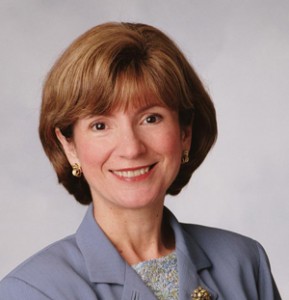
Debra L. Ness, president, National Partnership for Women & Families
Photo: National Partnership for Women & Families
In last month’s State of the Union address, President Obama gave a powerful and resonant speech, issuing a ringing call for fairness, fair play and equal opportunity in our workplaces and our health care system.
President Obama was right. At this time when millions of people in this country are struggling, Congress must stop the political battles and instead advance the fair pay, job creation and other critical initiatives President Obama discussed — because they are the initiatives America needs.
As we work to create more jobs, we must ensure that new jobs pay fair wages and provide basic family friendly supports like paid sick days and paid family and medical leave. Right now, too many workers can lose pay or be fired just for taking time off to recover from illness or care for a sick child. Latino workers confront this reality at disproportionate rates: nearly 12 million Latino workers – almost 60 percent of the Latino workforce — don’t have a single paid sick day to use to recover from common illnesses. Many more lack paid sick days to care for a sick child, forcing them to make the terrible choice between leaving a sick child alone or sending him or her to school, or losing a paycheck or possibly even a job. A paid sick days standard would help to alleviate these choices for millions of families.
Read the entire In 2012, We Can and Must Do Better
Posted by Elena del Valle on February 27, 2012

Orly Wahba, CEO, Life Vest Inside
Photo: Vicki Ades
A podcast interview with Orly Wahba, founder and chief executive officer of Life Vest Inside, is available in the Podcast Section of Hispanic Marketing & Public Relations, HispanicMPR.com. During the podcast, she discusses her organization with Elena del Valle, host of the HispanicMPR.com podcast.
After completing her graduate studies in Jewish History from Touro College Orly dedicated ten years to work with tweens and teens and at charities in her community. Since 2004, she has been an educator for Middle School at the Yeshivah of Flatbush. Orly strives to incorporate ideas of kindness, love and respect in the hearts and minds of her students. She is fond of saying, “Kindness, don’t just do it live it!”
To listen to the interview, scroll down until you see “Podcast” on the right hand side, then select “HMPR Orly Wahba” click on the play button below or download the MP3 file to your iPod or MP3 player to listen on the go, in your car or at home. To download it, click on the arrow of the recording you wish to copy and save it to disk. The podcast will remain listed in the February 2012 section of the podcast archive.
To watch the video click on the play button in the video player below.
Posted by Elena del Valle on February 24, 2012

Why Has America Stopped Inventing book cover
Photo: Planned Television Arts
Contrary to what many of us think it seems the United States is not the most innovative nation on the planet any more. Darin Gibby, a Colorado patent attorney, has dedicated two decades of his life to representing clients filing patent registrations and claims. Over time his frustrations bubbled over and he realized it had become increasingly difficult and expensive to file a new patent registration, especially for individuals and small business owners. He researched the history of patents in the United States to discover how it was that our nation was rich in patents 150 years earlier and poor in patents today relative to the overall population. In Why Has America Stopped Inventing (Morgan James Publishing, $19.95), a 241-page softcover book published this year, he shares his findings.
An ineffectual patent registration system has made it nearly impossible for a lone inventor to register a new patent, according to Gibby. At its low point the United States patent overseers were only approving 12 percent of applications. Due to a series of actions by the government over the past century which continues to the present day patents have become the domain of large corporations with the resources to register and protect them yet little time for new inventions.
The book is divided into an Introduction and 22 chapters. In the last two chapters, the author addresses the high costs of registering an invention which start at $25,000 and can escalate steeply from there, and ways to fix the broken patent system.
“When I discovered that America invents half of what it used to, I wanted to know the reason. So, I began studying the lives of America’s famous early inventors for clues. In the process, I discovered that inventing in nineteenth century America was much more central to America’s culture than today,” said Gibby in response to a question about the most interesting part of the book project. “From Abraham Lincoln selecting the country’s three leading patent attorneys to be on his cabinet (Seward, Chase, and Stanton) to Daniel Webster arguing Goodyear’s case before the Supreme Court while still Secretary of State, all of America prized innovation. Patent cases were front page news, with transcripts of the Colt revolver cases being published daily in the N.Y. Times. Most important, I found that what made America successful more than a century ago could be brought back today. Why Has America Stopped Inventing? tells that story.”
Gibby spent two years researching and writing the book which includes much historical data and case studies. Over his legal career Gibby has procured patent registrations for hundreds of inventions and built IP portfolios for Fortune 500 companies.

Click to buy Why Has America Stopped Inventing
Comments:
Filed Under: Books
Posted by Elena del Valle on February 22, 2012
By Tony Malaghan
Chief Executive Officer
Arial International

Tony Malaghan, CEO, Arial International
The “Great Recession” has had an impact on us all in one way or another and with businesses across all industries struggling in the face of an economic climate not seen since the Great Depression, what better way to grow your business than tap into a market of 50.5 million people, with a purchasing power of more than one trillion dollars right at your own back door! A great majority of businesses however, appear to be overlooking the US Hispanic market with few companies proactively targeting this segment of the market in a strategic and culturally appropriate manner.
According to the US Census Bureau 2010 Census data, 308.7 million people reside in the US, of which 50.5 million (or 16%) are of Hispanic origin. This is an increase from 35.3 million in 2000 when this group made up 13% of the total population. That’s an increase of 15.2 million between 2000 and 2010, and accounts for over half of the 27.3 million increase in the total population of the United States. Put another way, the Hispanic population grew by 43%, which is four times the growth in the total population at 10%.
I can hear you saying, there is no denying the population growth of this segment of the market, but hasn’t the US Hispanic market been impacted just as much, if not more, than the general market by recessionary forces? It’s true that Hispanics were proportionally significant employees in those industries hardest hit by the recession, and that the Hispanic unemployment rate has been running higher than the nation’s overall rate, (Table 1).
Click to read the entire The US Hispanic Market, A Viable Acquisition Strategy in a Recovering Economy
Posted by Elena del Valle on February 20, 2012

Thomas Cooper, Ph.D., professor, Visual and Media Arts, Emerson College
Photo: Thomas Cooper, Ph.D.
A podcast interview with Thomas Cooper, Ph.D., professor, Visual and Media Arts, Emerson College, is available in the Podcast Section of Hispanic Marketing & Public Relations, HispanicMPR.com. During the podcast, Tom discusses leading media ethics issues with Elena del Valle, host of the HispanicMPR.com podcast.
Tom previously taught at Harvard University and the University of Hawaii. A former assistant to Marshall McLuhan, he is the co-Founder and co-Publisher of Media Ethics magazine. He serves as speechwriter for Jochen Zeitz who is CEO of Puma. He is also author of Fast Media Media Fast (see Massachusetts professor addresses media overload).
To listen to the interview, scroll down until you see “Podcast” on the right hand side, then select “HMPR Thomas Cooper, Ph.D.” click on the play button below or download the MP3 file to your iPod or MP3 player to listen on the go, in your car or at home. To download it, click on the arrow of the recording you wish to copy and save it to disk. The podcast will remain listed in the February 2012 section of the podcast archive.
Posted by Elena del Valle on February 17, 2012
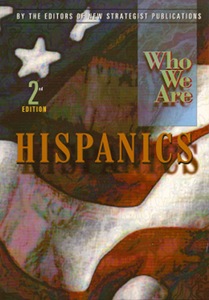
Who We Are: Hispanics book cover
Marketers and planners across the nation continue to examine the findings of the 2010 United States Census. One of the notable findings, from a big picture ethnicity and race perspective, is that there were three million more people of minority background and one percentage point higher than the experts anticipated.
The Second Edition of Who We Are: Hispanics (New Strategist, $89.95), published last year, outlines the main findings of the 2010 Census about the Hispanic population of the United States, including counts by state and major urban areas.
The book, provides black and white tables and illustrations and data on spending, household wealth, impact of the Great Recession, time use and attitudes about some issues. Who We Are: Hispanics is part of the Who We Are Series of three books sold together and individually. The other two titles are Who We Are: Asians and Who We Are: Blacks.
The 312-page book is divided into an Introduction, an Executive Summary and 11 chapters titled: Attitudes, Education, Health, Housing, Income, Labor Force, Living Arrangements, Population, Spending, Time Use and Wealth.
For the Who We Are Series the publisher’s staff dedicated, according to promotional materials, hundreds of hours reviewing, compiling and analyzing information and data from the federal government about the size and characteristics of the Asian, black, and Hispanic populations, described as “the most rapidly growing segments of the consumer marketplace.”
New to the second edition of the Who We Are Series is a chapter on the attitudes of Asians, blacks, and Hispanics on issues such as political identification, happiness and trust in others, religious beliefs, and support for gay marriage.

Click to buy Who We Are: Hispanics
Comments:
Filed Under: Books
Posted by Elena del Valle on February 15, 2012
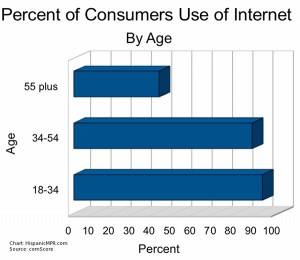
Percent of consumers use of the internet by age – click to enlarge
Marketers targeting Millennial women (those born between 1981 and 2000), should be aware that the members of this generation of 79 million tend to have short attention spans and are more likely to engage with digital media than television, according to Next-Generation Strategies for Advertising to Millennials, a 17-page report by comScore released January 2012. Overall, 93 percent of consumers aged 18 to 34; 88 percent of consumers 35 to 54 and 42 percent of consumers 55 and older said they used the internet, according to the comScore researchers.
It seems the engagement of this generation of women is stronger for digital media than that of older generations who engage more with television, according to the findings of the study. Given the right reasons and a strong incentive from an ad they, like other generations, respond with high ad effectiveness scores.
The results outlined in Next-Generation Strategies for Advertising to Millennials were gleaned from an analysis of nearly 1,000 comScore tests of the effectiveness of television ads and 35 tests of digital creative that aired in the United States. Ad recall and engagement were included in the study.
Overall, researchers examined the views of 500,000 women from four generational groups: Millennials (aged 16 to 29); Generation X (aged 30 to 44); Baby Boomers (aged 45 to 59); and Seniors (60 and older). Only women, considered the primary purchasers for most products, were studied.
Posted by Elena del Valle on February 13, 2012
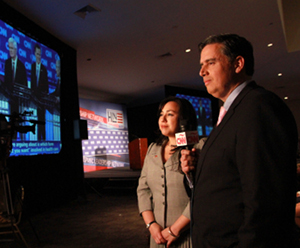
CNN en espanol news staff covering 2012 presidential debates
Photos: CNNenEspanol, Stagnito Media
The changes in media that deepened with the Great Recession and the demise of the traditional profit model will continue; social media and citizen journalism will likely impact media; and media channels are expected to further evolve in 2012, likely merging digital and social media into the mix, and continuing the development of media hybrids, according to a recently released Vocus report.
Vocus analysts believe that last year media experienced “an evolutionary revival.” While more newspapers closed last year (152) than the previous year (151) and hundreds of staff were left jobless there were 201 launches, 158 online and 43 in print. The new channels, many of them focused on local happenings, are likely to be home to young and digitally savvy staff.
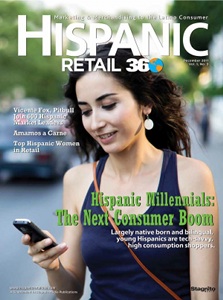
Hispanic Retail 360 December 2011 cover
The effect of the economic downturn was milder on magazines than on papers last year although there were very few national print magazine launches. Lucky Peach, Hispanic Retail 360 and The Social Media Monthly were cited in the report. Executives of Hispanic Retail 360, launched April 2011 by Stagnito Media as a continuation of the company’s annual conference by the same name, plan to publish four issues in 2012. The 36-page magazine, edited by Don Longo and produced by four staff, is divided into 60 percent editorial and 40 percent ads. It sells for $50 per year.
At the same time 50 new online only magazines began publishing in 2011. While many worried that the iPad would signal the end of magazines the report speculates the device may be saving magazines because people are looking for digital content to read on their tablets.
In 2011, streaming of television programs online was growing and there was growth in television and television related websites for Hispanics, according to the report. Several major TV networks launched websites targeting the Spanish dominant Hispanic population. CNN launched CNNenEspanol. com and Fox News launched Fox News Latino. NBC may launch NBCLatino.com this year.
Last year, News Corp., Fox’s parent company, launched Fox Hispanic Media, which encompasses Fox Deportes, Utillisima and Nat Geo Mundo, a Spanish-language National Geographic channel. NBC established Hispanic at NBC, an integrated sales/marketing division and research platform called.

Don Longo, editor, Hispanic Retail 360
The Spanish dominant market has been targeted by some local news sites. For example, the El Paso Times offers SomosFrontera.com; Patch.com offers Latino oriented editions in Southern California. Online Hulu launched Hulu Latino with Spanish language soap operas and other programs from Univision, Estrella TV, Galavision, Azteca America, and Telefutura (see Hulu targets U.S. Spanish speakers ). Overall, the researchers estimate there will be strong competition between television and other news sources online.
There was an increase of 240 million radio listeners 12 and older in 2011. Online radio use increased and the favorite format seems to be, if last year is any indication, news and talk shows, according to the report.
Blogs and bloggers have found acceptance and in some cases popular followings. Last year’s growth in blogs was mainly in the consumer sector, especially blogs about domestic life, parenting and cooking as well as professionals and companies, according to the report.
The State of the Media Report 2012 Evolving and Merging, an 18-page report, was compiled and written by Katrina M. Mendolera of Vocus, a provider of cloud-based marketing and public relations software. The report was the third annual State of the Media Report produced by the Vocus Media Research Team who predict that in 2012, cultivation and implementation will continue along with new ideas and trends. Print and broadcast will be enhanced into “shinier, newfangled versions that now incorporate all the elements of new and social media.”
Posted by Elena del Valle on February 10, 2012
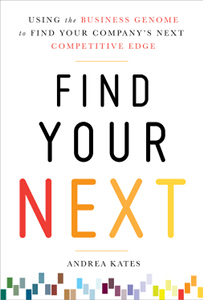
Find Your Next book cover
Photos: Andrea Kates
Andrea Kates, a branding specialist, believes many businesses share a similar “genetic” structure. She is convinced that by understanding what works for a company’s “genetic” type it is possible to fine tune that company focusing on strengths and avoiding weaknesses. In Find Your Next: Using the Business Genome to Find Your Company’s Next Competitive Edge (McGraw Hill, $30), a 226-page hardcover book published this year, she outlines the method and steps she proposes to unlock a company’s basic structure in order to focus on the fine tuning.
She believes there are six main parts to a business: product and service innovation; customer impact; talent, leadership, and culture; process design; trendability and secret sauce. Part of the research she conducted for the book consisted of in-depth interviews with representatives of P.F. Chang’s, GE ecomagination, GM/OnStar, IndieGoGo, Placecast, Autodesk, Cisco Systems, and Jones Lang LaSalle.

Andrea Kates, author, Find Your Next
Kates fours steps are meant to combine experience and instinct. They are: sort through options and evaluate hunches; compare your business structure (she calls it genome) with existing successful businesses in your field; adopt the ideas of others you think will enhance your company; and release habits that are no longer useful and adopt those that can help your business grow.
Kates, according to her book bio, has worked as a business strategist, facilitator, and speaker, with 250 business innovation initiatives for corporations, entrepreneurs, and organizations including Royal Dutch Shell (Asia-Pacific), Audi, Allstate, Continental Airlines, Hewlett-Packard, JP Morgan Chase, KPMG, the Houston Texans (NFL), and OnStar.

Click to buy Find Your Next
Comments:
Filed Under: Books
Posted by Elena del Valle on February 8, 2012
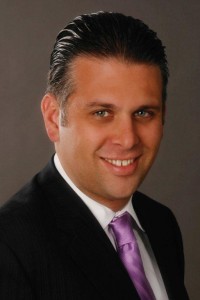
Nelson Albareda, president and CEO, NLB
Photo: Event US Live
Last month, National Latino Broadcasting, LLC (NLB) launched En Vivo, a music channel targeting United States Hispanics 18 to 49 years of age with a mix of hits and live performances; and Cristina, a talk show centered channel relying on the well known television gabber, part of a two-channel deal with Sirius XM Radio.
En Vivo, airing on SiriusXM channel 147, is expected to feature Tu Mañana Live, a bilingual morning talk show; The Mash Up, an English and Spanish language contemporary music program; Concierto En Vivo, offering concerts from around the world; and Club En Vivo with live broadcasts from some of the nation’s best clubs.
“We are convinced that En Vivo will become a favorite for Hispanics and non-Hispanics alike looking for a channel where Latin music is more than a preference; it is a lifestyle. The sheer diversity of genres within this music makes the programming possibilities truly exciting and our partnership with The Latin Recording Academy makes this endeavor unique and unprecedented,” said Nelson Albareda, president and chief executive officer, NLB.
Thanks to an exclusive deal with The Latin Recording Academy, according to promotional materials, En Vivo will become the official satellite radio part of the Latin Grammys. En Vivo plans to air daily content related to the Latin Grammy Awards and archival material.

Cristina Saralegui will have a one-hour show on the Cristina Channel
The En Vivo slogan is Donde Nace la Música (Where Music Is Born). The channel will broadcast from a new state-of-the-art facility in Miami and has secured partnerships with studios in New York and Los Angeles. These performance studios will allow live concerts to be broadcast as daily and weekly specials. Additional programming highlights include new music and a live recorded performance per hour.
The Cristina Channel with Cristina Saralegui will include a one-hour show with the talk show host targeting women 24 to 54 years old. NLB also plans to offer 24 hour daily programming on news, entertainment, music, and political issues on that channel.
National Latino Broadcasting, LLC (NLB), owned exclusively by Eventus, according to a spokesperson for Eventus is a media company targeting Latino communities in the United States through “entertaining and informative programming while creating innovative marketing solutions for marketers” targeting Latino consumers. The new channels will be promoted via a public relations campaign in English and Spanish.
SiriusXM, a satellite radio company, broadcasts 135 satellite radio channels of music, and sports, news, talk, entertainment, traffic, weather, and data services to 21 million subscribers.


























